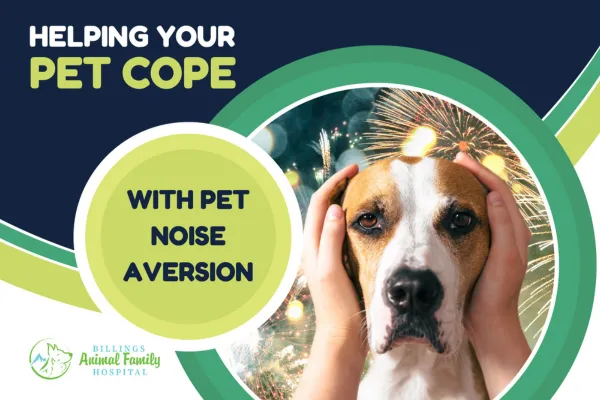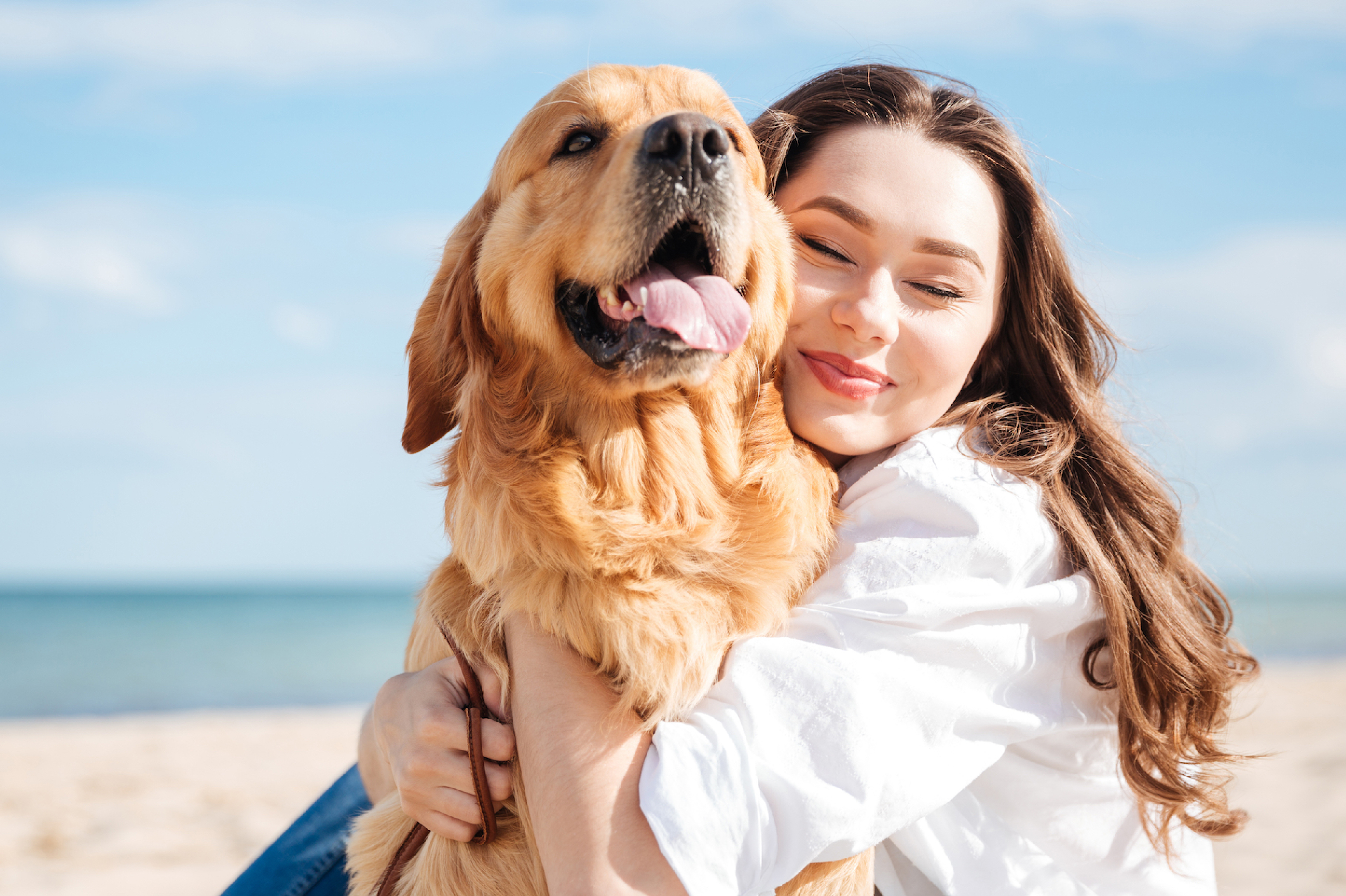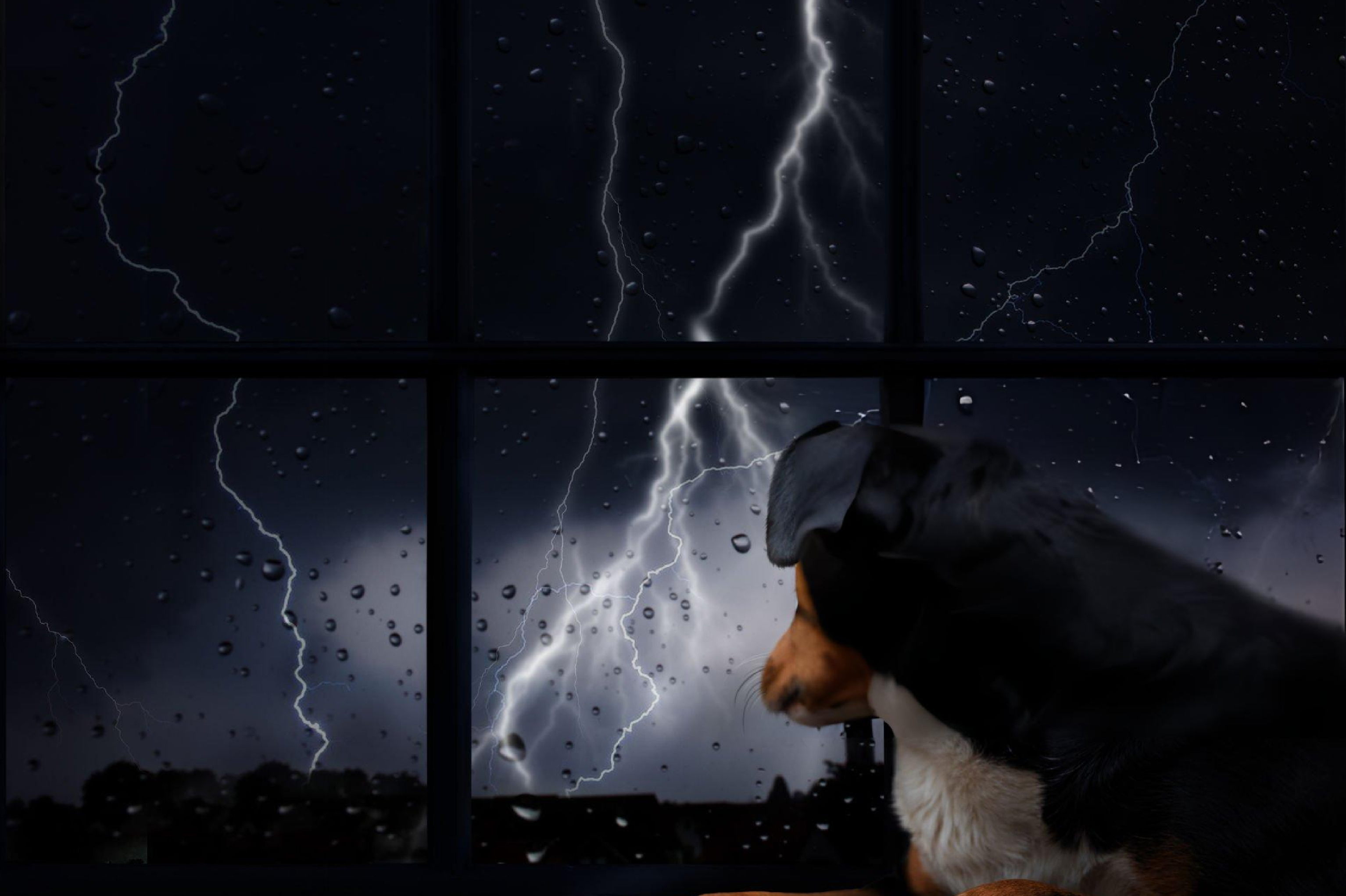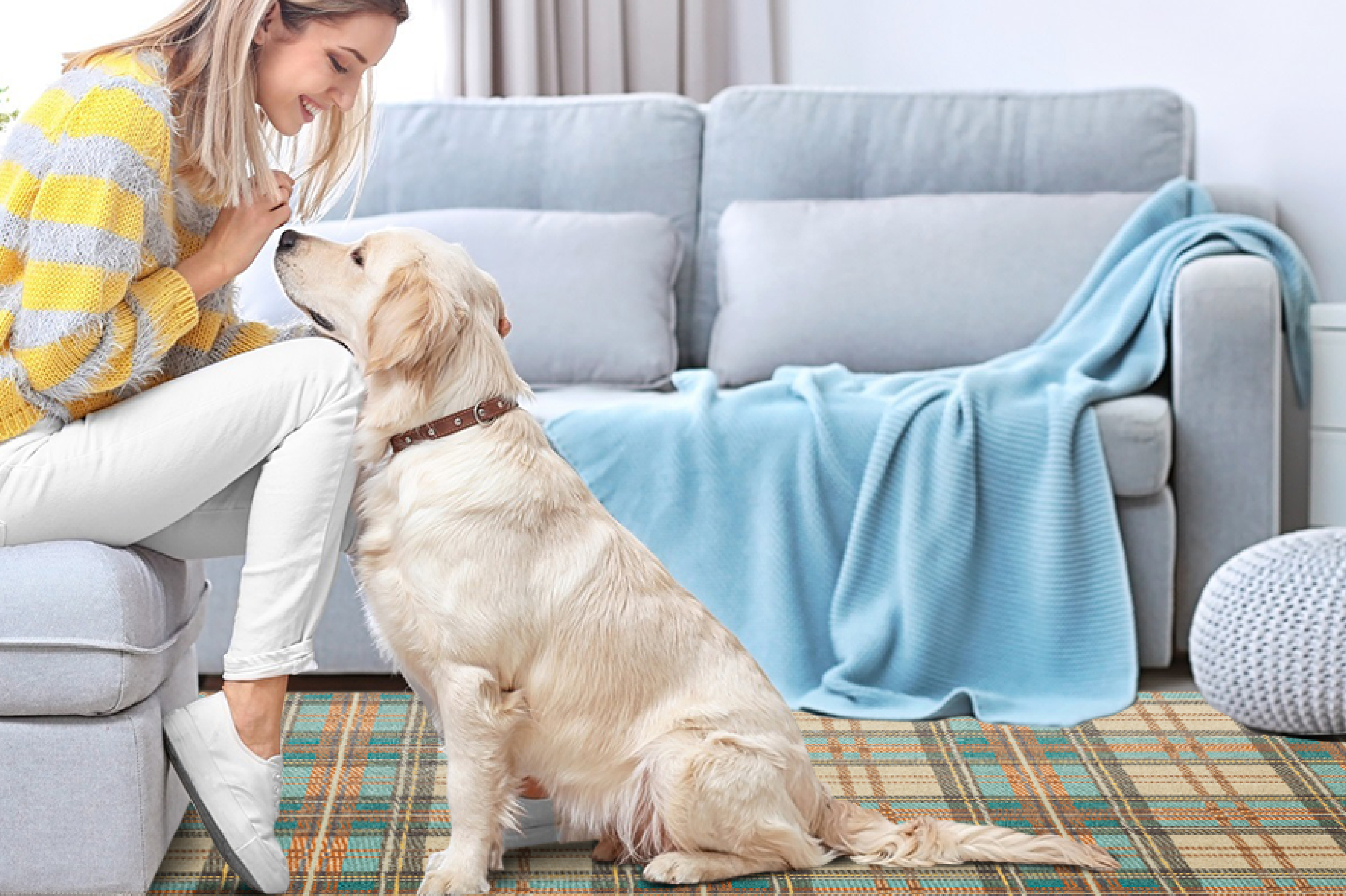
Pet Noise Aversion: How to Help Dogs and Cats Stay Calm
Helping Your Pet Cope With Pet Noise Aversion
Noise is part of everyday life, whether it's fireworks, a passing thunderstorm, or even construction nearby. But for some pets, these sounds trigger fear and stress. This reaction is known as pet noise aversion, and it's more common than many pet owners realize.
When noise aversion in pets is left unaddressed, it can worsen over time, affecting your pet's health, behavior, and quality of life. In this blog, we'll walk through noise aversion in dogs and cats, how to recognize it, and what you can do to help your furry friend feel calm during stressful noise events.
What You'll Find In This Post
Helping Your Pet Cope With Pet Noise Aversion
Recognizing noise aversion signs in pets
Causes of noise aversion in pets
Cause of noise aversion in dogs
Causes of noise aversion in cats
Common triggers of pet noise aversion
Practical tips to help your pet cope
How veterinary care can help pet noise aversion
Long-term treatment for noise aversion in pets

What is pet noise aversion?
Noise aversion is an exaggerated fear response to certain sounds. Unlike a mild startle, it involves intense fear, stress, or even panic. This condition can affect both dogs and cats, although it's more commonly seen in canines.
For example, a dog with noise aversion may tremble, pant, pace, or try to hide when fireworks or thunder rumble. Similarly, noise aversion in cats may show up as hiding under furniture or refusing to eat after a loud noise.
The key difference between simple startle responses and noise phobia (a severe form of noise fear) is intensity and duration. While many dogs recover quickly from a loud sound, those with canine noise aversion may remain stressed long after the noise event has ended.

Recognizing noise aversion signs in pets
Spotting the signs early helps you act before things escalate. Pets affected by noise aversion often show predictable behaviors:
Trembling, shaking, or panting during a thunderstorm or firework display.
They hide under beds, in closets, or try to escape the house.
Excessive barking, whining, or meowing.
Destructive behavior, such as chewing furniture or scratching doors.
Refusal to eat or use the litter box (standard in cats).
These signs may start small but can progress into a full thunderstorm phobia or noise phobia without support.
Worried about your pet feeling under the weather? This article teaches you how to diagnose your pet’s symptoms safely. Read more here.

Causes of noise aversion in pets
Noise sensitivity is common in both cats and dogs, often leading to stress or anxious behavior. Understanding the causes of noise aversion helps owners support their pets’ comfort and well-being.
Cause of noise aversion in dogs
Noise aversion in dogs is often linked to traumatic experiences, lack of early exposure to loud sounds, or genetic predispositions. Over time, repeated exposure without comfort can make the reaction stronger.
Causes of noise aversion in cats
Noise aversion in cats usually stems from their heightened hearing and natural survival instincts. Sudden or unfamiliar loud sounds may cause hiding, hypervigilance, or aggression. In some cases, past negative associations with noises can worsen the response.
Common triggers of pet noise aversion
Not all pets are equally sensitive. Breed, environment, and past experiences play a role. Some of the most frequent triggers include:
Thunder and thunderstorms
Fireworks and holiday celebrations
Household appliances (vacuum, blender, hair dryer)
Construction or loud noise outside
Gunshots or car backfires
Interestingly, studies show that many dogs develop worsening reactions with age, making early behavior modification necessary.

Practical tips to help your pet cope
Supporting your pet at home is just as important as professional care. Try these strategies:
Create a safe space - Designate a quiet, cozy area where your pet feels secure during a noise event. Use blankets, toys, or even music to make it more comforting.
Stay calm yourself - Pets often mirror our emotions. By staying calm, you show them that the situation isn't dangerous.
Use positive reinforcement - Pair noise events with rewards, like treats or play, to shift the association from fear to something positive.
Explore noise sensitivity training - Gradually exposing your pet to low-level noises and increasing volume over time can reduce their fear. A professional best guides this type of training.
Consider supportive tools - Items like pheromone sprays, compression wraps, or background white noise can ease stress during fireworks or storms.
Want to know more ways to show affection to your pets? Read our blog on “How Do Dogs and Cats Show Affection? The Sweet Ways Our Pets Say “I Love You”

How veterinary care can help pet noise aversion
If you suspect your pet is suffering from noise aversion, the best first step is consulting your veterinary team. Veterinary care may include:
Behavior modification and noise sensitivity training tailored to your pet.
Prescription calming aids or supplements.
Tools like pheromone diffusers or white noise machines can mask sounds.
Long-term plans for managing canine noise aversion or noise aversion in cats.
The best way to support your pet is to consult your veterinarian, who can assess their needs and create a personalized care plan.
Visit our Comprehensive Wellness Check Services to learn about what we can offer for your pet, and book a call with our team if you feel they may be struggling with noise aversion.

Long-term treatment for noise aversion in pets
While quick fixes can help during a thunderstorm or fireworks event, many pets need ongoing support. Long-term noise aversion treatment often combines professional guidance, environmental adjustments, and regular behavior modification.
The earlier you address the problem, the easier it is to prevent it from becoming a full-blown noise phobia. A combination of consistent care, veterinary support, and training can make a significant difference.

Final words
Living with pet noise aversion can be challenging, but the right strategies and veterinary support make a big difference. Being prepared for unexpected triggers ensures your pet gets the immediate care they need. Start by downloading our Emergency Vet Contact Card.
Contact Billings Animal Family Hospital today. We are here to help your pet feel safe, secure, and better able to cope with noise aversion.



